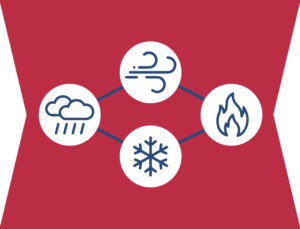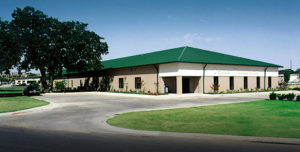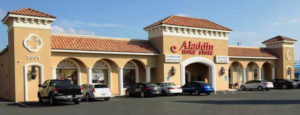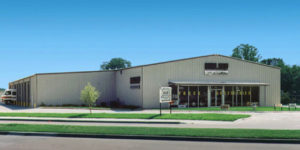Greater Protection from the Elements
The strength of steel buildings for business delivers many benefits for the commercial market. Pre-engineered steel commercial buildings provide excellent defenses from the elements.
The Strength of Steel Prefab Commercial Buildings
 A steel-framed building is stronger than conventional wood framing. Pre-engineered metal buildings offer greater protection from hurricane-force winds, heavy snows, and earthquakes.
A steel-framed building is stronger than conventional wood framing. Pre-engineered metal buildings offer greater protection from hurricane-force winds, heavy snows, and earthquakes.
Steel conducts electricity much better than wood. Consequently, properly grounded steel framed commercial buildings resist lightning damage, as the current passes through the framing and harmlessly into the ground.
In addition, inorganic steel does not attract termites, vermin, or mold like organic wood products.
Fire-Resistant Steel Buildings for Business
 Since it is non-combustible, steel framing guards against fire damage.
Since it is non-combustible, steel framing guards against fire damage.
In fact, framing is the third mostly likely place for a fire to ignite in a building. Therefore, steel framing reduces the likelihood of fire compared to combustible wood framing.
In addition, if a fire starts elsewhere in the building, the steel framing does not feed the fire like wood framing does.
Consequently, the owners of commercial grade steel buildings enjoy reduced insurance rates for their metal structures.
Pre-engineered Steel Commercial Buildings Retain Beauty and Value
Prefabricated metal buildings are extremely durable.
For example, steel resists decay better than any other building material. Steel buildings also last longer and age much slower than ordinary wood-framed structures.
 Wood expands and contracts along its width, depth, and length—each at different rates— with changes in moisture content. This causes the wood to bend, twist, warp, split, and shift in a process builders call “creep.”
Wood expands and contracts along its width, depth, and length—each at different rates— with changes in moisture content. This causes the wood to bend, twist, warp, split, and shift in a process builders call “creep.”
With the constant movement, a wood frame loosens over time. Nails work out. Windows and doors no longer close properly. Eaves and overhead door openings droop, giving the building that old, tired look.
All this dramatically affects what real estate professionals call “curb appeal”— and therefore the value of the property.
However, dimensionally stable steel does not change shape with humidity changes like lumber does. RHINO’s steel framed commercial buildings go up straight and stay that way year after year.
In addition, wood construction today uses nail guns and staplers as framing connectors. Fortunately, RHINO steel commercial buildings rely on stronger bolts and screws. These connections will not pull out over time as nails do.
RHINO Steel Prefab Commercial Buildings Promise Consistent Quality
 Did you know that every species of tree has different characteristics?
Did you know that every species of tree has different characteristics?
Even each tree within a species varies. Depending on its location, the age of the tree, weather patterns during its growth, soil and insect variables, and the ever-changing moisture content within the lumber, absolute characteristics in lumber are impossible to define.
Therefore, how can anyone predict precisely how an organic lumber will behave under any given stress?
Wood building is an inexact science at best, based on average performance of a given type of wood.
However, steel is consistent and predictable.
RHINO commercial buildings are precisely manufactured to strict industry guidelines. Each piece of a particular gauge performs exactly as all other pieces of the same style and gauge, supporting a known weight at a certain width and at an exact distance from the next component.
Conclusion
RHINO steel framed commercial buildings supply the most bang for your commercial building buck.
Steel: Strong, Safe, Smart Buildings for Business
RHINO structural packages include metal commercial buildings for sale. We custom design every one of our structures to the client’s exact needs, desires, and location.
We offer sturdy metal commercial buildings for sale all across North America.
Want to know more?
A metal building specialist at RHINO can answer your every question and furnish a free estimate for your upcoming commercial building project.
Please call RHINO now at 940.383.9566.
(Updated 6-23-2021. Originally published 4-22-2013.)
